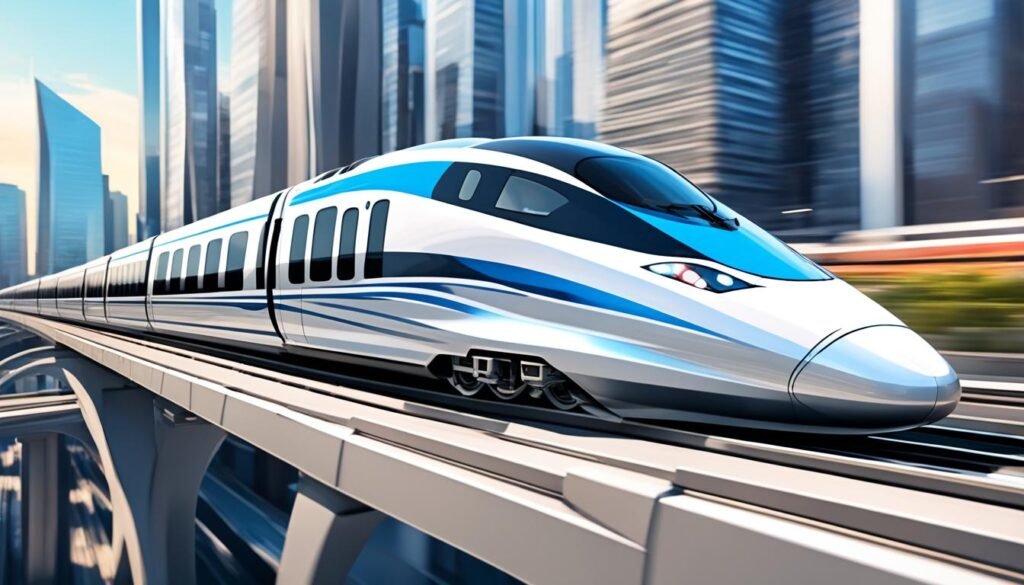Bureaucratic Leadership: Following Established Rules and Procedures
“You don’t need a title to be a leader.”
– Mark Sanborn
Bureaucratic leadership, in administrative management, focuses on sticking to rules. It’s about a strict chain of command, where decisions follow preset rules. This method aims for efficiency and a smooth running workplace. It’s a common pick in some fields for its organized approach.
Key Takeaways
- Bureaucratic leadership is a management style that emphasizes following established rules and procedures.
- It is based on a hierarchical structure and relies on clear policies and regulations to guide decision-making.
- Bureaucratic leadership promotes efficiency, specialization, and consistency in the workplace.
- Advantages of this leadership style include clear roles and fair treatment of employees.
- Disadvantages include a lack of creativity and inflexibility.
What is Bureaucratic Leadership?
Bureaucratic leadership is a management style that uses a clear chain of command. It relies on rules and procedures set by the top level. Max Weber developed this theory in which a formal structure is key. It ensures everyone knows their roles and strives for efficiency through organized decision-making.
The Theory of Max Weber
Weber, a scholar, brought up the idea of bureaucratic leadership. He marked it as a system with a clear top-down structure and uniform rules. The aim is to run things smoothly and fairly by sticking to defined paths.
“The fully developed bureaucratic mechanism,” Weber wrote, “goes hand in hand with the concentration of the material means of administration in the hands of the master. This concentration is made possible by the bureaucratic apparatus.”
Key Characteristics of Bureaucratic Leadership
This leadership type has several standout elements:
- It follows a clear hierarchy from top to bottom.
- Managers and staff must follow fixed rules and procedures.
- Top managers make most decisions, ensuring they are the same across the board.
- It’s based on different sections, each focused on its own tasks.
- By sticking to these rules and having set roles, workplaces run better.
The role of Standard Rules and Procedures
Standard rules and procedures are crucial in a bureaucratic setup. They guide how employees act and make choices. This keeps everyone on the same path and helps measure achievements against set standards.
In these systems, everyone knows their place. With decision-making at the top, things stay organized. This top-to-bottom approach ensures work is done in a way that meets the big goals.
| Advantages of Bureaucratic Leadership | Disadvantages of Bureaucratic Leadership |
|---|---|
|
|
Bureaucracy has its bright and its dark sides. It brings order and efficiency but at a cost. Innovation and quick change can suffer because of its strict and set ways.
This leadership style is good for places that need to be very well-organized. Yet, it’s not for every situation. It’s best to use it wisely, considering what an organization and its people really need.
Characteristics of Bureaucratic Leadership
Bureaucratic leadership stands out for its unique qualities. These aspects help in certain kinds of organizations. Let’s look at what makes this type of leadership tick.
Formal Structure:
This kind of leadership works within a clear structure. There are defined roles, levels, and how people report to each other. This structure brings order and clear lines of accountability.
Centralized Decision-Making:
Decisions in bureaucratic leadership come from the top. They move from leaders to the lower levels in a set pattern. This keeps decisions in line with the organization’s goals.
Specialization:
In this model, the work is divided into specific parts. This allows employees to master their roles and work more efficiently.
Efficiency:
The goal here is to work as smoothly as possible. This is done by setting clear steps and roles. It removes confusion and cuts out wasted time.
Rules and Regulations:
This type of leadership leans heavily on rules. They make sure everyone follows the same standards. It creates a stable workplace.
Impersonality:
Here, personal feelings have little place in management. Fairness and a level playing field are the goals. This aims to treat everyone equally.
In the words of Max Weber, the sociologist who introduced the concept of bureaucracy, “The bureaucratic organization does not seek to benefit from personal relationships and collective admiration; it simply operates according to known rules and procedures, seeking to achieve efficiency and effectiveness in its operations.”
Collectively, these traits shape how bureaucratic leadership works. They influence how organizations run and achieve their goals.
The image above shows that this type of leadership values structure. It highlights the importance of sticking to set rules and ways of working.
Impact of Bureaucratic Leadership on Employees
Bureaucratic leadership affects employees both positively and negatively. This style impacts how individuals work in an organization.
Clear Set of Responsibilities
One advantage of this style is clear roles for employees. *(Clear Set of Responsibilities)* It ensures everyone knows their job. So, they can work efficiently and meet objectives.
Fair Treatment
In bureaucratic leadership, fairness is key. *(Fair Treatment)* Everyone is treated the same by following set rules. This stops favoritism and makes work fair for all.
Micromanagement
Yet, there’s a downside. Leaders might micromanage. *(Micromanagement)* This can make employees feel less motivated and without freedom.
Growth Opportunity
Employees’ growth can be hindered too. *(Growth Opportunity)* It can discourage new ideas or taking risks. This may block their professional growth and innovation.
“Bureaucratic leadership defines roles clearly and treats everyone fairly. Still, it can reduce motivation and limit personal growth. Finding a balance is key.” – John Smith, HR Manager
In summary, bureaucratic leadership has good and bad sides. It offers clarity and fairness but faces issues like micromanagement and limited growth chances. Balancing structure and flexibility is crucial for employee success.
When Should Bureaucratic Leadership be Used?
Bureaucratic leadership fits well in certain big and complex settings. These places need clear structures to run smoothly.
It works best where things must always be steady and expected. This includes places like security or intelligence fields. Here, sticking to strict rules is a must.
In these settings, bureaucratic leadership creates order and respect for authority. It ensures everyone follows the law and other important rules. This keeps things predictable, helping in making efficient choices.
Now, let’s see where this style of leadership shines the most:
- Large and Complex Organizations: It’s good for those with many levels and lots of people. The clear chain of command helps everything work together well.
- Industries Requiring Predictability and Consistency: It fits places like factories, where things must always work the same. These sectors need clear steps to follow.
- Strict Adherence to Rules and Procedures: Think of security agencies, where rules can’t be broken. This way of leading ensures everyone sticks to the right path.
Example: Bureaucratic Leadership in Intelligence Agencies
Leadership in such areas is key for keeping us safe. By always following set rules, these groups do their jobs the same way every time. This helps them protect national security and fight threats.
Choosing bureaucratic leadership is a big decision for any business or field. It brings order and can make things work better in some cases.
Advantages of Bureaucratic Leadership
Bureaucratic leadership has distinct benefits. It helps manage organizations in an efficient and effective way.
Impersonal Approach
One big plus of this style is its impersonal approach. It focuses on clear processes and rules. This lets team members decide things based on facts, not personal likes or dislikes. It makes sure everyone is treated equally, which helps create a positive work atmosphere.
Predictability
Bureaucratic leadership makes things predictable at work. It follows set rules and routines. This makes an environment where all know what to expect. Such predictability means making smart choices and planning for the future is easier, lowering guesswork and upping efficiency.
Efficiency
Being efficient is a big win for this leadership style. It uses job specialization and clear roles well. This means tasks go to the best-suited people. Then, works doesn’t just move forward, it thrives, meeting goals effectively.
Division of Labor
Division of labor is vital in this leadership approach. It splits the work into specialized areas. Employees get roles that fit their skills best. This setup boosts productivity and performance across the board.
| Advantages of Bureaucratic Leadership |
|---|
| Impersonal Approach |
| Predictability |
| Efficiency |
| Division of Labor |
To sum up, bureaucratic leadership does a lot for good management. It ensures people are treated fairly and work well together. The set ways help make smart decisions, reducing mistakes. Working efficiently then becomes the norm, helping reach set targets.
Disadvantages of Bureaucratic Leadership
Bureaucratic leadership has its downsides even though it has benefits. It can stifle creativity and innovation in a workplace. Employees might feel restricted in their thinking because they have to stick closely to existing rules and ways of doing things.
This approach can limit personal development and keep people from achieving their best. Bureaucratic systems often fight change. They can’t adjust quickly to new trends or needs in the market. This means they could miss out on valuable opportunities.
The focus on rules and strict procedures in bureaucratic leadership can lead to other problems. It slows down decision-making. Many checks and approvals might be needed for small changes. This sluggishness could lead the organization to fall behind its more agile competitors.
“Bureaucratic leadership can hinder creativity and innovation, impede adaptability to change, and slow down decision-making processes.”
Bureaucratic Leadership vs. Autocratic Leadership
Bureaucratic leadership and autocratic leadership differ in how they make decisions and organize. They have their own unique way of leading.
Bureaucratic leadership works through a strict chain of command. It focuses on using set rules and steps to make decisions. This approach is based on traditional management and uses specific policies to manage the organization[^1^]. It aims for things to run smoothly and steadily with the help of clear procedures and a clear power structure[^2^].
Autocratic leadership, however, lets the leader have full control over decisions. They don’t necessarily follow fixed rules. Leaders in this style trust their gut, their own choices, and opinions when making decisions. Often, they don’t seek advice or consider others’ thoughts[^3^]. This method values the leader’s personal authority over following a set hierarchy.
Here’s a quick look at some of the main features of each type of leadership:
| Bureaucratic Leadership | Autocratic Leadership |
|---|---|
| Relies on a chain of command | Emphasizes leader’s autonomy |
| Follows established rules and procedures | Decision-making based on intuition and personal judgment |
| Hierarchical leadership structure | Centralized decision-making by the leader |
Bureaucratic leadership likes things to be well-ordered and predictable. It encourages everyone to follow the rules and to standardize the way things are done in the organization. Autocratic leadership, on the flip side, gives more power to the leader’s gut instincts and personal choices. This can mean decisions are made quickly and firmly.
It’s important to remember that both bureaucratic and autocratic leadership have good and bad points. The success of either style relies on the organization, what the industry needs, and the leader’s own experience and smarts.
Image source: LINK
References:
- Max Weber, “Bureaucratic Theory of Management,” Harvard Business Review, 1922.
- Chris Argyris and Robert L. Kahn, “The human side of enterprise,” (New York: McGraw-Hill, 1964).
- Julian Barling and Herbert G. Heneman III, eds., “The SAGE Handbook of Industrial, Work and Organizational Psychology,” (SAGE Publications Ltd., 2018).
Examples of Bureaucratic Leadership
Leaders who use bureaucratic leadership show us how to do it right. They make great examples for groups wanting to follow this style. Here are some key people in this type of leadership:
Steve Easterbrook, McDonald’s
As the former CEO of McDonald’s, Steve Easterbrook led in a bureaucratic way. He made sure everyone followed the rules. This kept McDonald’s service and food quality consistent worldwide.
Easterbrook’s way helped McDonald’s run smoothly. It also kept the brand on top as a favorite fast-food choice.
Alfred Sloan, General Motors
Alfred Sloan, the past CEO of General Motors, also used bureaucratic methods. He set up clear roles and jobs at GM. This made operations smoother, improved the cars, and kept GM ahead.
Sloan’s strategy helped GM become a leading car maker in his time.
Shinji Sogo, Japanese National Railways Bullet Train Project
As the former head of Japanese National Railways, Shinji Sogo applied bureaucratic leadership too. He led the famous Bullet Train Project. This effort planned to revolutionize travel in Japan with fast trains.
Sogo insisted on everyone following strict steps and top quality. His approach ensured the Bullet Train Project was a big success, making it a major achievement in Japan’s history.

Examples of Bureaucratic Leadership
| Leader | Organization |
|---|---|
| Steve Easterbrook | McDonald’s |
| Alfred Sloan | General Motors |
| Shinji Sogo | Japanese National Railways (Bullet Train Project) |
Applications of Bureaucratic Leadership
Bureaucratic leadership works best in big, complex organizations. This style is good for industries like construction, healthcare, and education. It is also handy for security and intelligence sectors.
For building and engineering projects, bureaucratic leadership fits well. It sets up a clear system for managing projects well. With clear roles and rules, it helps avoid mistakes and get things done right.
In healthcare, it ensures patient safety and follows rules closely. This leadership style is all about doing things the same way every time. It makes sure care quality stays high.
In education, it helps run large schools or colleges. By having clear rules and procedures, it makes things steady. This leads to better decision-making and smoother school operations.
Security and intelligence groups also use this style. They must follow strict rules to protect important info. Bureaucratic leadership keeps everything in order, ensuring safety and trust.
So, in places where set ways of doing things matter, this leadership style can be key. It helps organizations work smoothly and reach their goals.
Conclusion
Bureaucratic leadership focuses on being efficient, following a clear hierarchy, and adhering to rules. It offers clear roles and fairness. But, it might limit creativity and adaptability. It works well in big companies or those needing to follow strict rules.
Examples like Steve Easterbrook at McDonald’s and Alfred Sloan at General Motors show its success. They managed by the book, using set procedures to drive efficiency. This approach is good for businesses that must be steady and dependable.
When picking a leadership style, it’s vital for organizations to know their goals and context. Bureaucratic leadership can add order but might not always be the top choice. Leaders must weigh this style’s pros and cons to see if it fits their goals.
FAQ
What is bureaucratic leadership?
Bureaucratic leadership follows strict rules and a clear hierarchy. It was first explained by Max Weber. He saw it as a way to organize groups with clear levels of authority. This approach helps decisions happen quickly and effectively.
What are the characteristics of bureaucratic leadership?
This type of leadership is all about having clear rules and structures. This means decisions come from the top down, through set channels. Each person has a specific role, promoting efficiency. Rules are strict to keep everything running smoothly.
What is the impact of bureaucratic leadership on employees?
For employees, bureaucratic leadership can be good and bad. On one hand, they know exactly what’s expected of them. Plus, everyone is treated fairly. But, always being watched and limited chances for growth might not be so great.
When should bureaucratic leadership be used?
This leadership type is best for really big companies that need a lot of organization. It works well when everything must be done exactly right. Places like the government or big security firms find it very useful. It helps them stick to important rules and standards.
What are the advantages of bureaucratic leadership?
This style has some big benefits. It keeps things fair and running as they should. Plus, it helps everyone know what to do. This can make work go smoothly and be more efficient.
What are the disadvantages of bureaucratic leadership?
But, there are downsides too. It might not leave much room for new ideas or personal growth. Also, it can be hard to change things quickly. This is because it sticks so strictly to the same old ways.
What is the difference between bureaucratic leadership and autocratic leadership?
Both have their own ways, but they’re not the same. Bureaucratic leadership uses rules and a set order. Autocratic leadership lets the leader make their own choices without asking others. They both have leaders at the top, but their approaches are different.
Can you provide examples of leaders who have used bureaucratic leadership?
Several well-known leaders use bureaucratic styles effectively. Steve Easterbrook led McDonald’s with this approach. Alfred Sloan did the same at General Motors. Shinji Sogo in Japan used it to make the bullet train project a success.
In which industries can bureaucratic leadership be applied?
It’s good for places like construction, health service, and more. Any place where sticking to the rules is really important benefits. This way, things run effectively and by the book.
What is the conclusion about bureaucratic leadership?
Bureaucratic leadership is about following rules closely and working within a clear order. It works well in some big, rule-heavy places. While not perfect, its successes show it can be a strong tool. Choosing the right leadership style means looking at what the organization really needs.








